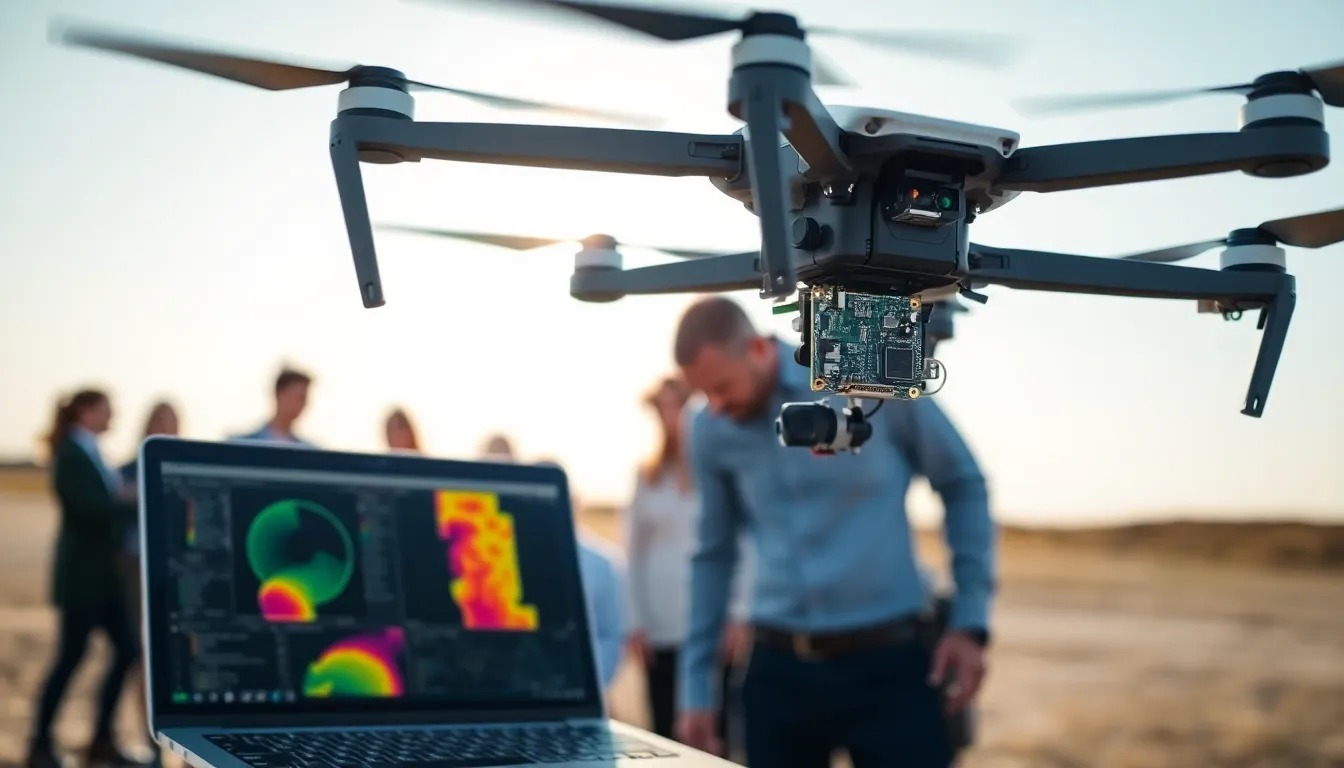Imagine a drone that doesn’t just take to the skies but also sees the world in a way that humans can’t, like a superhero in a gadget-laden suit. Enter the Webbizmagnet Raspberry Pi Zero Thermal Drone, a game-changer in the world of aerial imaging. Combining the power of the Raspberry Pi Zero with advanced thermal imaging technology, this drone is not just a flying robot: it’s a modern marvel. Ready to jump into how this little powerhouse operates? Let’s explore.
Table of Contents
ToggleUnderstanding Raspberry Pi Zero Technology

Raspberry Pi Zero is a tiny yet powerful computer, perfect for a myriad of projects, especially when it comes to drones.
Key Features of the Raspberry Pi Zero
This microcomputer is known for its compact size, measuring just 65mm x 30mm. Even though its small footprint, it packs quite a punch with a 1 GHz single-core CPU and 512 MB of RAM. The built-in HDMI and USB ports allow for easy connectivity, making it simple to hook up various sensors or cameras. Not to forget its GPIO pins, which allow for extensive customization and control over connected devices, making the Raspberry Pi Zero an excellent fit for drone projects.
Comparing Raspberry Pi Zero to Other Models
When placed alongside other Raspberry Pi models, the Zero truly stands out due to its affordability and compactness. Unlike the Raspberry Pi 4, which requires more power and space, the Zero is super easy to embed in various configurations. It’s a streamlined option for those who prioritize weight and balance in drone design. While it might lack the horsepower of its bigger siblings, the Raspberry Pi Zero compensates with incredible flexibility, especially in thermal applications.
Applications of Raspberry Pi Zero in Drones
Raspberry Pi Zero opens the doors to various applications in drone technology. From agriculture to search and rescue, its lightweight nature and versatility make it a choice option.
Drones equipped with Raspberry Pi Zero can perform precision farming tasks, enabling farmers to monitor crops from above. Thermal imaging capabilities allow for assessing plant health, identifying irrigation issues, and optimizing resource allocation. Also, in search and rescue operations, this technology can pinpoint heat signatures, making it easier to locate missing persons or pets. The possibilities are almost endless, proving that this tiny computer can perform monumental tasks.
Advantages of Using Thermal Imaging in Drones
Using thermal imaging in drones drastically enhances operational capabilities. This technology has transformed how industries approach surveillance, inspection, and monitoring.
For instance, thermal cameras can detect heat sources, making them invaluable in electrical inspections. Whether it’s spotting overheated power lines or checking the thermal performance of buildings, the former can save both time and resources. Also, in wildlife studies, these cameras allow for tracking animals without disturbing their natural habitat. In essence, integrating thermal imaging into drone technology elevates the utility beyond conventional methods.
Building Your Own Thermal Drone with Raspberry Pi Zero
Creating a thermal drone with a Raspberry Pi Zero might sound daunting, but it can be quite straightforward with a little guidance.
Essential Components for Your Thermal Drone Project
To build your thermal drone, you’ll need a few key components:
- Raspberry Pi Zero: The brain of your operation.
- Thermal Camera: Essential for capturing heat images.
- Drone Frame: Choose a lightweight design to ensure optimal flight.
- Battery: Ensure it’s compatible with Raspberry Pi Zero for reliability.
- Bluetooth or Wi-Fi Module: For seamless communication and data transfer.
Step-by-Step Guide to Assembling the Drone
- Mount the Raspberry Pi Zero: Secure it inside the drone frame.
- Connect the Thermal Camera: Attach it to the Raspberry Pi using the appropriate connectors.
- Install the Battery: Ensure it’s securely fastened for safe operation.
- Configure Software: Load applicable code and libraries on the Raspberry Pi to manage data from the thermal camera.
- Test Flight: Always conduct tests in a controlled environment to fine-tune functionality.
Safety and Regulatory Considerations for Drone Use
Flying drones isn’t just about having fun: safety and regulatory considerations are paramount. Drone operators must adhere to regulations set by aviation authorities to ensure safe airspace use.
Understanding local laws is critical before launching your Raspberry Pi Zero drone. This includes adhering to altitude restrictions, maintaining line of sight, and avoiding no-fly zones. Also, practices such as conducting pre-flight checks and ensuring the drone is in safe working conditions can significantly reduce risks. A responsible approach to drone operation not only ensures legal compliance but also enhances safety for all.
Future Prospects of Raspberry Pi in Drone Technology
The future of Raspberry Pi in drone technology is promising. As advancements in components and software develop, we can expect more capabilities and applications. With trends like artificial intelligence and machine learning front and center, the integration of these technologies with Raspberry Pi drones can lead to smarter, more autonomous operations. Imagine drones that can analyze data in real-time or optimize flight paths using predictive algorithms. The potential is not just exciting: it’s revolutionary.



